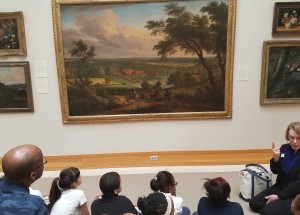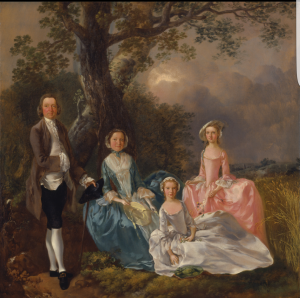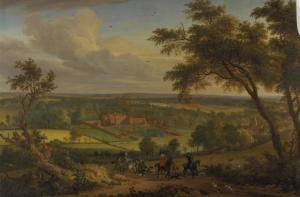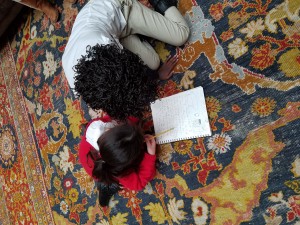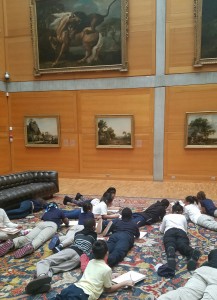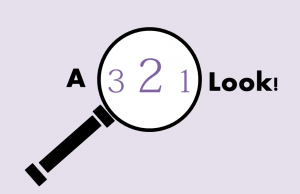Five teachers from the Read School in Bridgeport, CT brought their students to the Yale Center for British Art last week, as part of their Visual Literacy partnership. They were divided into groups and headed off into the galleries with their parent chaperones and their group leaders (either a docent, their teacher or myself). Each group visited two paintings, and discussed what they saw in the paintings as well as what they thought might be happening.
The children were equipped with pencils and their sketch journals, which they have been using in the classroom for drawing and writing as they engage in Visual Literacy. They drew what they saw in the paintings into their sketch journals. Drawing the paintings forces them to observe carefully and they see things they would have missed. As Donald Graves said, “We see with our hands.”
There are a number of things that happen when children talk about paintings. First, as they tell what they see, they share and build vocabulary at a rate I never see in other conditions. One child says “The horse has a seat on his back,” and another says, “It’s a saddle.” I kept notes as they shared new words, but could barely keep up!
The other thing that always surprises me is the easy connections they make to these paintings, which at first glance seem so distant from their lives today. Looking at these scenes allows the children to share their own previous knowledge and life experiences with each other. One little girl said, “I think it’s morning because the sun is shining some pink, and that’s what I see in the morning.” When describing a dog in a hunting scene, a little boy said, “I think he’s trembling because he is about to enter the woods and woods are dark.” Note the vocabulary: words like “trembling” catch the attention of us teachers, who are often surprised that they know these words.
For the last half-hour of our visit, the children met in the Library Court and wrote in their journals about what they saw. They were given choices for writing. Some told a story about a painting, others described it. Some also chose to write from the perspective of one of the people or animals in the paintings. A few wrote poems.
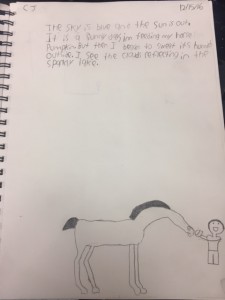
The kids are learning to live in the paintings, and write from there.
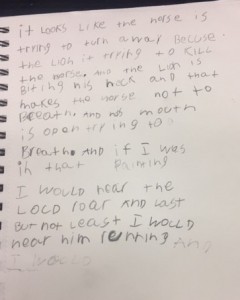
These journal entries are seeds for all sorts of writing: personal narratives, poems, stories, informative essays, expository pieces, etc. The paintings are the bridge to their authentic topics and voices.
